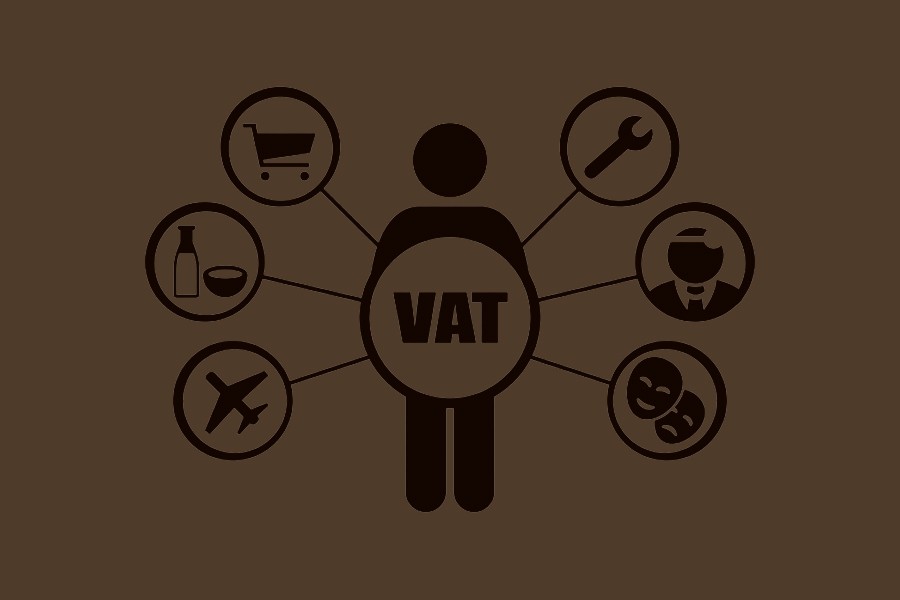There are two types of VAT registration-Central registration and Unit registration. When businesses located in more than one place are registered under a Central location, it is called Central VAT registration, and when separate VAT registration is issued at each business location, it is called Unit VAT registration. Generally, VAT payers prefer Central VAT registration, while VAT department prefers to give Unit VAT registration. Recently, an issue has arisen regarding Central VAT registration. So, we need to be aware what type of VAT registration is better for revenue and businesses.
VAT was introduced in Bangladesh in July 1991. In the 1991 VAT law, there was one type of Central registration. The VAT and Supplementary Duty Act, 2012 (new VAT law) was enacted in November, 2012. There was another type of Central VAT registration. On July 1, 2019 when the new VAT law came into force, a new type of Central VAT registration has been instituted in the new VAT law.
Let us review these three types of Central VAT registration mechanisms. Under the 1991 VAT law, entities of three categories would qualify for obtaining Central VAT registration; such as: (a) when a manufacturer manufactures at one place and sells through multiple places; (b) when a commercial importer following import sells through multiple places; and (c) when a service provider renders service through multiple places. Multiple manufacturers were not given one Central VAT registration.
Traders other than commercial importers were also not given Central VAT registration. Earlier, National Board of Revenue (NBR) was empowered to issue Central VAT registration but later, the power was vested upon the VAT Divisional Officer.
Under the 1991 VAT law, there were another mechanism called similar goods method (avinno mullo poddhoti) under which a manufacturer or importer could pay final stage VAT centrally and could sell the goods through his own sales centres, dealers or agents without payment of further VAT at those places. NBR was empowered to allow such method on application of the registered entities. So, we see that there were adequate provisions under the 1991 VAT law under which manufacturers, importers and service providers could pay VAT centrally. In the late 1990s and in early 2000s such method was liberally allowed.
From 2009 when talks surfaced regarding enactment of a new VAT law, such mechanism was discouraged. When the new VAT law was enacted in November 2012, the registration regime was basically central, one RJSC (Registrar of Joint Stock Companies) registration, one TIN (Tax-payers Identification Number), one BIN (Business Identification Number) was adopted as the basic principle of VAT registration. It can be mentioned that BIN is VAT registration. However, it was also provided that if any branch or centre wanted to keep accounts or records separately, it could take separate unit registration. Thus, it was perceived that compliance under the Companies Act 1994, Income Tax Ordinance 1984 and VAT and SD Act, 2012 shall fall in one line. This mechanism was broader than the central VAT registration method enshrined in the 1991 VAT law as mentioned above.
After the amendment of the new VAT law through Finance Act, 2019 that has come into effect from 1 July 2019, provisions regarding Central VAT registration says that if any entity carries on economic activities of identical or similar goods or services or both from two or more places and if the books of accounts are maintained centrally, it may apply for Central registration.
This method is a departure from the two earlier methods mentioned above. People are not accustomed to this method. Identical goods or service or similar goods or service is a new notion which in my opinion does not properly fit into the context. Moreover, these have not been defined under the law.
If I were to evaluate the above three methods of Central VAT registration, my opinion would go in favour of the second one, i.e. one RJSC, one TIN, one BIN principle. We are talking about ease of doing business. If entities are asked to keep same accounts for compliance of three laws, certainly it goes in favour of ease of doing business. If I ask the readers which one of the above three types is easy to understand, I am confident most of the readers would favour method number 2, i.e. one RJSC, one TIN, one BIN principle. Under such a mechanism, VAT evasion will become difficult since multiple agencies will look at the same data and records.
We need to keep in mind the basic purpose of VAT registration. By registering the entities under VAT law, first we list the entities capable of paying VAT. Secondly, we bring the entities under a network so that they can not evade VAT. Thirdly, we develop data for future use. To attain all these objectives, one RJSC, one TIN, one BIN is the best method. Gradually, we will need to integrate our VAT management system with other information management systems of the government and even with some non-government entities. This method would best serve the purpose.
It is learnt that the National Board of Revenue (NBR) is contemplating on the formulation of a guideline regarding Central VAT registration. May we request to give these ideas some thought. Frequent change of any regime is difficult for businesses to comply with. Any regime requires to be formulated following thorough examination and discussion with the stakeholders, so that once formulated it does not require frequent changes. Sustainability is a prerequisite of better compliance.
Dr. Md. Abdur Rouf currently works at a World Bank-financed VAT-related project as a Specialist.
Opinion expressed in this article are his own.


